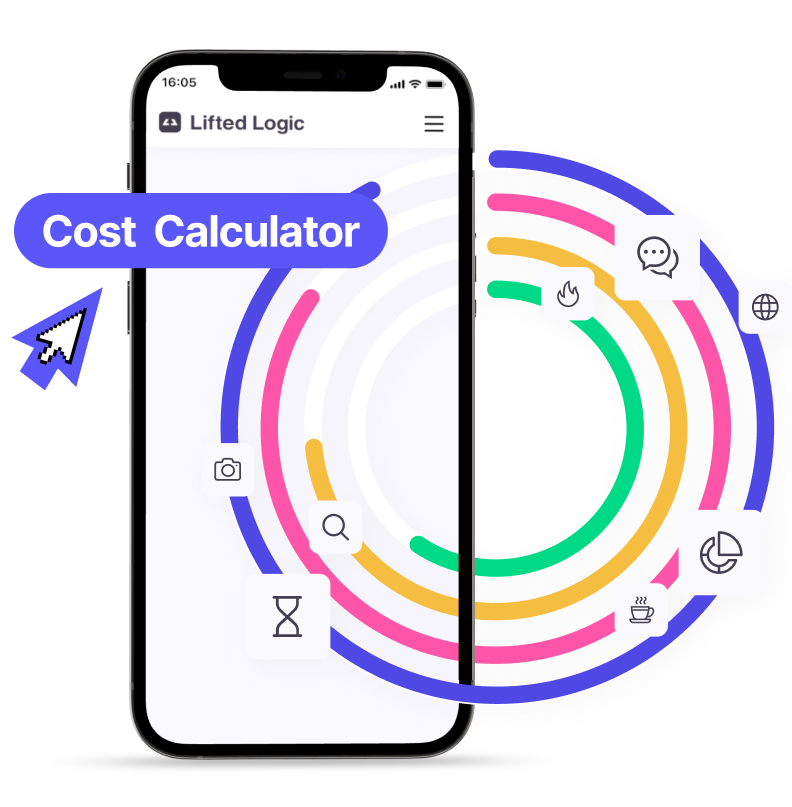When it comes to social media metrics, you definitely want to have a high-level view of how to measure your successes and your do-better-next-times.
“Feeling” like something is working isn’t enough in the 2020 digital climate. So now that you’ve determined that a business social media marketing plan is what you need to take your brand to the next level, and you’ve created a manageable social media handle, it’s time to determine your KPIs.
What’s a KPI?
Key Performance Indicator (KPI) is a term we use in the marketing world to define what measurable action items we can record and track to understand the performance of a marketing campaign or strategy.
As a web design agency in Kansas City, Lifted Logic has historically used conversions as our primary KPI to determine website performance.
This may be different from what you’ve heard at other agencies. Some may use “new users” or “click through rate” as indicators of how well their website has performed.
The reason we care more about conversions above any other user behavior or action is that a conversion is a real, warm lead that gets sent to your business from the website. This is what actually equals money in the bank.
Your site could have 10,000 new users per month, but if you don’t get contact information from even 10 of them, we don’t believe we’ve done a good job.
But what does a website’s KPI have to do with social media?
First of all, your business’s website is your digital anchor on the web. Without a website, it’s a lot more difficult to get the word out about your services and to help people understand that you exist.
So there’s that.
But beyond brand awareness, websites have a much higher conversion rate for new leads than social media does (or any other marketing vehicle for that matter).
That’s because a user’s intent on a website is much different from that on social media.
User intent?
A user doesn’t take a single action on the web without a reason. Whether it’s engaging with your post, direct messaging you, or visiting your website, the user intends to do something with their time. They have a “problem” and need a solution.
For example:
Problem: “I want a new sweater to complement the jeans I got for my birthday!”
Solution: The Loft is having a sale on chic winter sweaters!!
There are a few ways this can go for a user.
• She understands that she has the problem and is actively searching for a solution.
• Other times, she may understand she has the problem, but is not actively searching for a solution.
• And, occasionally, she doesn’t know she has the problem at all.
Our goal as a marketing agency is to understand this cycle, understand who we’re talking to, and help them solve their problem.
When it comes to social media, however, it’s not so easy.
Active vs. Passive Consumption
Typically, a user on social media falls into the one of the two latter scenarios above. After all, if they were in the first scenario, they probably wouldn’t be on social media. They’d probably be calling around or googling the problem instead (and therefore actively looking for a solution).
The issue is that every business believes that users actively want their solution—even when they don’t have a problem.
Say it with us: social media is a form of passive media consumption.
This is why very few industries perform well and make revenue on social media. You cannot serve users content they don’t want right now, even if they might want it later (or wanted it five days ago).
So if you’re in the vast majority (read: service industry, medical profession, even travel or leisure) you probably won’t experience much success on social if the only social media metrics you’re measuring are conversions or conversion rate.
The more you can remind yourself of this fact, the more equipped you’ll be in determining your social media metrics.
How to determine your social media KPIs
Let’s go ahead and say, yes, measure your conversions. At the end of the day, this is what you should look at to make high-level decisions on whether or not your company should even do social media in the first place.
But because conversions are going to be low, here are a few other social media metrics to help you micro-analyze your social accounts and determine what’s working and what isn’t.
01. Reach
Where to find it: Your Social Media Platform’s Analytics Dashboard
Reach is a social media metric that tells us the total number of people who saw your post. You can also divide reach into more specific KPIs:
• Impressions: the number of times one piece of content was seen. This can include the same user more than once.
• Average # of Impressions: the average number of times a single user saw one piece of content.
So if your reach is 100 and your impressions was 120, that means each user saw that one piece of content an average of 1.2 times. Depending on your target audience and the type of content you are producing, generally we want reach and impressions to be about the same number. This would indicate that you reached the most unique, individual users with just one post.
02. Engagement
Where to find it: Your Social Media Platform’s Analytics Dashboard
Most social platforms consider “engagement” to mean any action that shows that a user interacted with a piece of content.
Some common forms of engagement when it comes to social media metrics:
• Likes or “upvotes”
• Shares or “retweets”
• Comments
• Clicks
Engagement can help indicate whether your content is interesting and engaging for a user.
If your engagement is low, try creating more of your social content in a way that invites participation from users. Ask an open-ended question. Start a poll and let people vote on something that would actually make an impact. Even run a giveaway.
The other reason your engagement could be low is because you’re posting too much. Try cutting down your posting frequency by 25% and see if that helps at all. If it does, that amount becomes your new normal.
03. Acquisition
Where to find it: Google Analytics
The Source / Medium report in Google Analytics can tell you exactly where users are coming from to land on your website. From there, you can follow their path to conversion or dropoff.
This will help you see and compare all of your social media efforts in one place. Did Facebook perform better than Twitter perform better than Instagram? You won’t know until you check!
04. Influence and Mentions
Where to find it: Your Social Media Scheduling/Analytics Program
With the rise in social media metric and management technology on the market, Social Listening has become an integral piece of measuring social media for your business.
In 2020, you no longer have to limit your perspective of customer engagement to your own profile or content. With advanced social listening technology, you can see who’s talking about you and when—even if they don’t tag you.
FYI – you can also follow hashtags as both a user and a business. Be sure to create your own hashtags so you can follow along with the activity you’re inspiring across the platform!
05. Volume
Where to find it: Your Social Media Scheduling/Analytics Program
On some social platforms, you can actually see data on your business’s volume share versus your competitors for any given period of time (Twitter offers the most amount of data and detail).
One of our favorite scheduling programs, SproutSocial, puts it best:
Improving your share of voice is likely an ongoing goal, one that you measure by benchmarking over time. Campaigns come and go, but your brand is forever. Unless you’re the only company in your field, you won’t always be able to maintain the biggest share of voice—but you can keep track of how it ebbs and flows over time and consider the factors for those changes.
06. Response Rate
Where to find it: Your Social Media Platform’s Analytics Dashboard; Your Public Profile Page
Response rate is more of a measure of your own performance than a social media metric indicative of your content. But it can be the key to improving engagement long-term.
If you take, on average, 24 hours to respond to a customer, especially if you are in the service industry, you are a lot less likely to convert that user to a lead than another company that responds within 2.
Even if you don’t have much time to spend on monitoring your social media accounts, you will want to understand your response rate in order to factor in your overall social media performance and how your users are interacting with, and perceiving, your brand.
Not sure which social media metrics are right for you?
Lifted Logic is a small-but-mighty digital agency in Kansas City. We serve a small number of new clients each year so we can dedicate our time and effort towards making every project we work on the best it can be.
If you’re still wondering whether or not your company should use social media—or how—feel free to give us a call or come out to our Kansas City office for a cup of coffee. Our social media managers will be happy to brainstorm, nit pick, and strategize with your team for the best possible business social media metrics to help you measure your short-term and long-term marketing goals.





